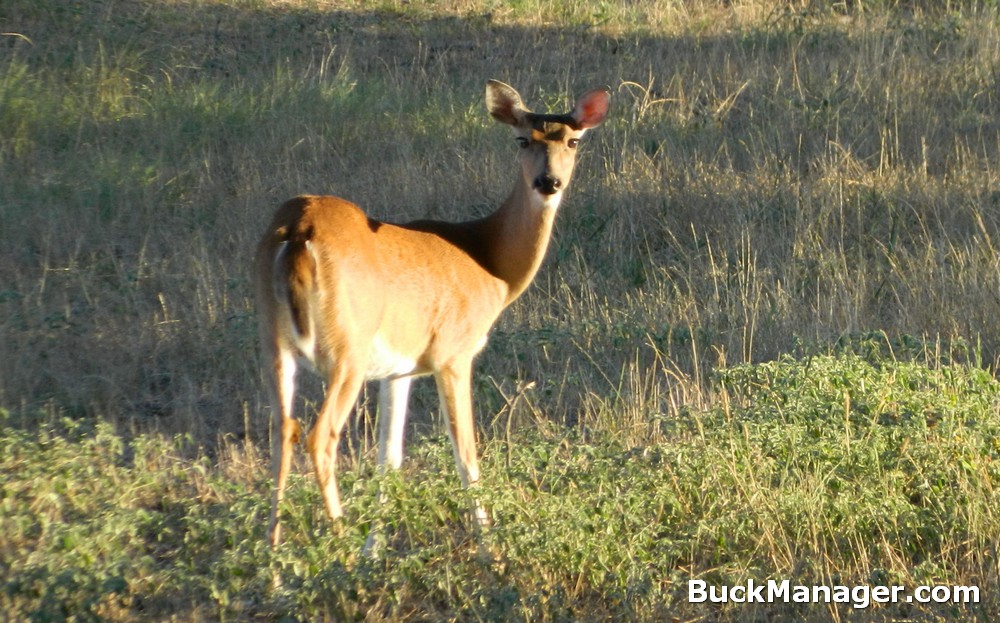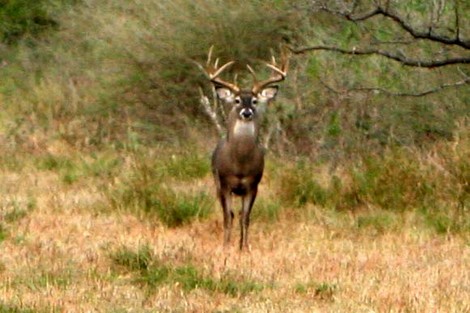It’s nearly impossible to manage a deer population without having some estimate of the number of deer in the area. Annual population estimates can provide valuable information such as herd composition, density and total estimated population. Information gathered from standardized survey techniques can help shape management actions for a property. Even something as basic as annual recruitment (fawn production) varies annually and recruitment is a direct measure of habitat and deer health. This can be measured with a minimal amount of survey effort.
Managing deer herd size alone can be a substantial part of habitat management on any property. After all, too many deer means increased browse utilization, decreased plant diversity, smaller-bodied deer, lower fawn survival and bucks that never reach their full potential for antler growth. In short, the plants and animals found on your hunting property can benefit greatly from you conducting annual surveys.

1. Spotlight Surveys – This is the most commonly used method for estimating deer populations. Specifically, this survey technique works best for estimating deer density. It’s best applied to properties larger than 500 acres. It involves setting up a survey route that is (ideally) representative of the property, then conducting night counts at least 3 times prior to the hunting season and recording what you see. Get additional details about using spotlight surveys for deer.
2. Mobile Daylight Surveys – This survey method is often used in conjunction with the spotlight method to supplement herd composition estimates. During spotlight counts, deer are recorded as bucks, does fawns and unidentified deer. As it turns out, many of the deer seen at night are difficult to accurately identify. So although spotlight counts are good for estimating density, they can come up short for estimating the composition of the deer herd if only a small number of animals are identified. Mobile daylight surveys simply involve driving (truck/jeep/UTV) the property during daylight hours with a good pair of binoculars and recording the number of bucks, does and fawns that you see. This will supplement spotlight data (which estimates population size) with the composition of the herd.
3. Stand Counts – This method falls along the same idea as mobile daylight surveys and can be used to supplement spotlight counts, but may be used as a stand-alone technique on smaller properties. Stand count surveys will not estimate deer density, but this method can result in good herd composition estimates prior to or even during the deer hunting season. A lot of data about the deer population can be collected quickly when all stands on a property are filled. Find out more about using stand count surveys for estimating the composition of a deer herd.
4. Camera Surveys – Motion-activated game cameras are very handy devices. Because they work 24-7 they can collect a ton of remote data (photos) that can be used for a variety of things. The only caveat is that you must set the cameras to collect the data you want or you’ll just end up with a ton of pictures. Properly-used cameras provide herd composition estimates and can also estimate deer density. Find out more about using cameras for deer management and how to perform camera surveys for deer.
5. Aerial Surveys – This survey method is not practical for most hunters and land managers, but it makes sense for those managing large blocks of land upwards of 7,500 acres. It does not work well in heavily-forested areas because of limited visibility. Aerial surveys for deer are best performed over more open areas such as grassland-dominated habitats or those comprised of low-shrublands. Helicopters are typically used but small, fixed-winged planes are the right choice for really large properties since they are less expensive. I imagine unmanned drones will be another, less-expensive alternative for deer surveys shortly.
Using Survey Data
It’s important to understand your management goals so that surveys can be used to reach annual objectives. Although each method outlined can provide useful information for making decisions about harvest management, it’s imperative that managers understand the limitations of each. Some techniques can be used to estimate deer density and population size while others will provide composition data only.
Additionally, if surveys are used to estimate density/deer population then the manager needs to have some idea of the deer carrying capacity of the property before knowing whether to decrease or increase fall harvest based on survey results.
Surveys for herd composition estimate buck to doe ratio and fawn to doe ratio. Though this will not estimate total population size, this is information can be used for structuring annual harvest goals. If the buck to doe ratio is estimated to be 1:3 and the goal is 1:2 then more antlerless deer need to be removed. Also, if the habitat and deer herd appears healthy based on body weights then the number of adult deer harvested each year needs to roughly equal the number of fawns recruited into the population each year to keep the population stable. A high number of fawns means a more liberal fall harvest while fewer fawns equates to a more conservative one.

Good post on deer management. It’s important to understand your management goals so that surveys can be used to reach annual objectives.
Thanks for the great summary. We are going to start surveys next year to get a better hold on deer numbers. We’ve been recording sightings in our stands during the hunting season